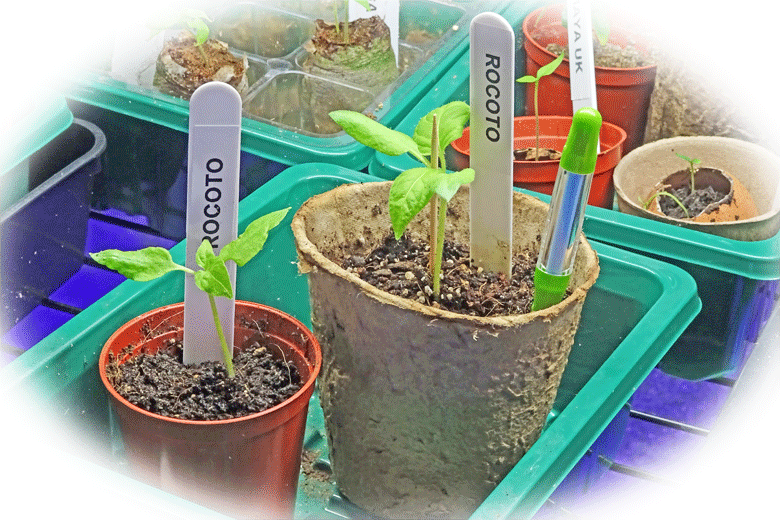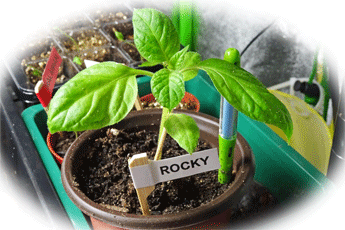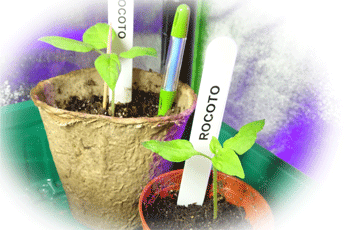
Getting rid of the gnats
I recently noticed an increase in the number of fungus gnats hovering around my Rocotos and other Chillies. While I have usually been able to keep fungus gnats under reasonable control by limiting my watering and using sticky fly paper, it just seems there are more of them around. Whether this is to do with me increasing the temperature in my grow tents, I am not sure. But one thing I do know is that I must take the bull by the horns. The time had come to get rid of these pests by using my new super weapon – hydrogen peroxide
Hydrogen when mixed to the ratio of one part 3 % H202 to four parts, water is an effective way to get rid of fungus gnat larvae and eggs. I made up a solution to this ratio and used it to treat the seed starting mix that my seedlings are planted in. To do this, I poured the solution onto the surface of the mix. The hydrogen peroxide drained through the mix and in the process killed off most of the larvae. By doing this, I hope to have broken the life cycle of the fungus gnats. Adults only live for seven days. By killing off the larvae and eggs, I will have reduced their ability to continue multiplying. It is the first step in permanently getting rid of these pests.
do this, I poured the solution onto the surface of the mix. The hydrogen peroxide drained through the mix and in the process killed off most of the larvae. By doing this, I hope to have broken the life cycle of the fungus gnats. Adults only live for seven days. By killing off the larvae and eggs, I will have reduced their ability to continue multiplying. It is the first step in permanently getting rid of these pests.
One problem solved, but potentially another was created. I have observed that when I add the H202 to seedling pots, the seed starting mix seems to expand and become “fizzy”. I have read somewhere along the line that hydrogen peroxide provides oxygen to the roots, but I also thought I had read that the fizzing is a reaction to acidity. This got me thinking – was the H202 having an impact on my seed starting mix? Was the hydrogen peroxide perhaps affecting the PH? That wouldn’t have been good, because Chillies prefer slight acidity in the seed starting and potting mixes.


 The rest still have a while to go, but I can see these Rocotos being potted on in the next couple of weeks.
The rest still have a while to go, but I can see these Rocotos being potted on in the next couple of weeks.